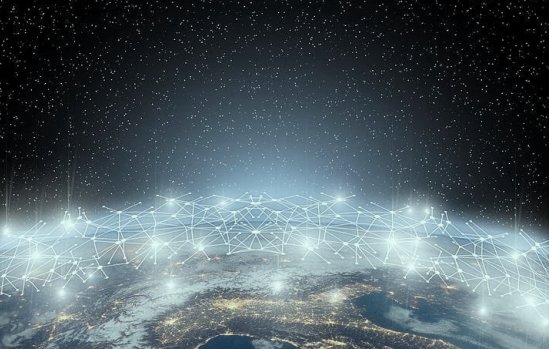By Shambhavi Mishra-
Introduction:
E-Governance can be defined as the application of information and communication technology (ICT) for providing government services, exchange of information, transactions, integration of previously existing services and information portals. The “e” in e-Governance stands for ‘electronic’. E-Democracy: It’s use of IT to promote the involvement of all parts of society in the governance of the Country. Emphasis is focused on giving citizens openness, accountability and participation. This requires electronic government reports, electronic grievance resolution, e-referendums etc. The formation of the “Department of Electronics” in 1970 was the first huge decision to e-governance in India as it put the emphasis on ‘data’ and its communication. Established in 1977, the “National Informatics Center” (NIC) initiated a “District Information System” to computerize all the country’s district offices.
Objectives:
- Effective delivery of services to the community.
- Accountability and accountability.
- Use knowledge to inspire people.
- Increase performance, i.e. between center-state or inter-state, inside government.
- Boost business and industrial device.
E-Governance Steps taken in India:
- Bhoomi Project (Karnataka): Online Delivery of Land Records[1]: Bhoomi is a self-sustainable e-governance project to provide 20 million rural land records to 6.7 million Karnataka farmers in computerized form.
- KHAJANE (Karnataka): End-to-end automation of Government Treasury System[2]: “Government to Government” (G2G) Karnataka State Government e-Governance project. This has been introduced mainly to address structural weaknesses in the manual treasury system and to administer State finances efficiently.
- e-Seva (Andhra Pradesh)[3]: Designed to include services such as ‘Citizen Governance’ and ‘e-Business to Citizen’. Both services are provided electronically by linking them tothe specific government bodies andproviding digital information at the point of service delivery to consumers / citizens. The project has become particularly common among the people for paying utility bills.
- e-Courts[4]: Launched by the Department of Justice, Ministry of Law and Justice. The Mission Mode Project (MMP) seeks to use technology for improved delivery of judicial services to people.
- e-District[5]: Launched by the Department of Information Technology. The MMP aims to provide high-volume, District-level citizen-centered services such as birth / death certificate issue, income and caste certificates, old-age and widow pension, etc.
- MCA21[6]: Launched by the Ministry of Corporate Affairs. The project aims to provide the companies listed under the Companies Act with electronic services. Different online facilities offered include name allocation and alteration, incorporation, electronic payment of registration fees, changing of registered office address, display of public records and other related services.
- e-Office[7]: Launched by the Department of Administrative Reforms & Public Grievances. The MMP seeks to dramatically boost the Government’s organizational performance by transitioning to a “Less Paper Office.”
E-Governance Issues:
- Infrastructure:
Few basic infrastructure services such as electricity, internet etc. Initiatives such as BharatNet[8] and Saubhagya[9] are steps taken in this way.
- Costs:
E-governance initiatives are costly matters that entail tremendous public expenditure. Project costs are one of the big impediments in the adoption of e-Governance initiatives in developing countries like India.
- Security and Protection:
Recent explosion in cases of data leakage has endangered the confidence of the people in e-governance. The implementation of e-governance initiatives therefore needs to provide security requirements and protocols to safeguard the rights of all groups of people.
- Digital Division:
Wide gulf between e-govt users and non-users. Resources. Resources. The digital divide takes place in parts of the population which are rich-poor, male-female, urban-rural etc. The difference needs to be narrowed down, otherwise even the e-governance opportunities will be fairly exploited.
Suggestions & Proposals:
- A hybrid approach needs to be adopted to enhance interoperability among applications for e-governance that will include a centralized approach for record management , information management , file management, grievance management etc.
- Throughout rural areas, e-governance programs will be taken through the definition and study of grass-roots realities.
- Cloud computing is now becoming a significant force for enhancing the delivery of e-governance related services. Cloud computing is not only a cost saving tool but also helps to allow new technologies, improve the education system and build new jobs / opportunities. Meghraj- GI Cloud is a step in the right direction[10].
- The government also should concentrate on developing suitable, feasible, distinct and efficient capacity-building frameworks for different stakeholders, including bureaucrats, rural masses, urban masses, elected representatives, etc.
- E-Governance by regional languages is appreciable for nations such as India where participants come from different linguistic backgrounds.
Conclusion:
Throughout India, e-governance is gaining steam, but public awareness and the digital divide are key issues that need addressing.
The progress of e-Governance initiatives depends primarily on the provision of high-speed internet, and in the near future, the national roll-out of 5 G technologies will improve our resolve.
[1] Bhoomi (Online Delivery of Land Records in Karnataka) | Department of Administrative Reforms & Public Grievances | MoPP&P | India. (2020). Retrieved 24 August 2020, from https://darpg.gov.in/webcast/bhoomi-online-delivery-land-records-karnataka
[2] AG Treasury Khajane Related Orders – Finance Department. (2020). Retrieved 24 August 2020, from https://finance.karnataka.gov.in/info-4/Financial+Rules/AG+Treasury+Khajane+Related+Orders/en
[3] Welcome to eSeva: Government of Andhra Pradesh. (2020). Retrieved 24 August 2020, from https://www.esevaonline.ap.gov.in/
[4] Home – eCourt India Services. (2020). Retrieved 24 August 2020, from https://ecourts.gov.in/ecourts_home/
[5] ई-डिस्ट्रिक्ट | होम. (2020). Retrieved 24 August 2020, from https://edistrict.up.gov.in/edistrictup/
[6] Ministry Of Corporate Affairs – Government of India. (2020). Retrieved 24 August 2020, from http://www.mca.gov.in/
[7] eOffice. (2020). Retrieved 24 August 2020, from https://eoffice.gov.in/
[8] Limited, B. (2020). BBNL, Ministry of Communications & Information Technology, Govt. of India. Retrieved 24 August 2020, from http://www.bbnl.nic.in/
[9] Saubhagya Dashboard. (2020). Retrieved 24 August 2020, from https://saubhagya.gov.in/
[10] (2020). Retrieved 24 August 2020, from https://www.meity.gov.in/writereaddata/files/GI-Cloud%20Adoption%20and%20Implementation%20Roadmap%281%29_0.pdf

